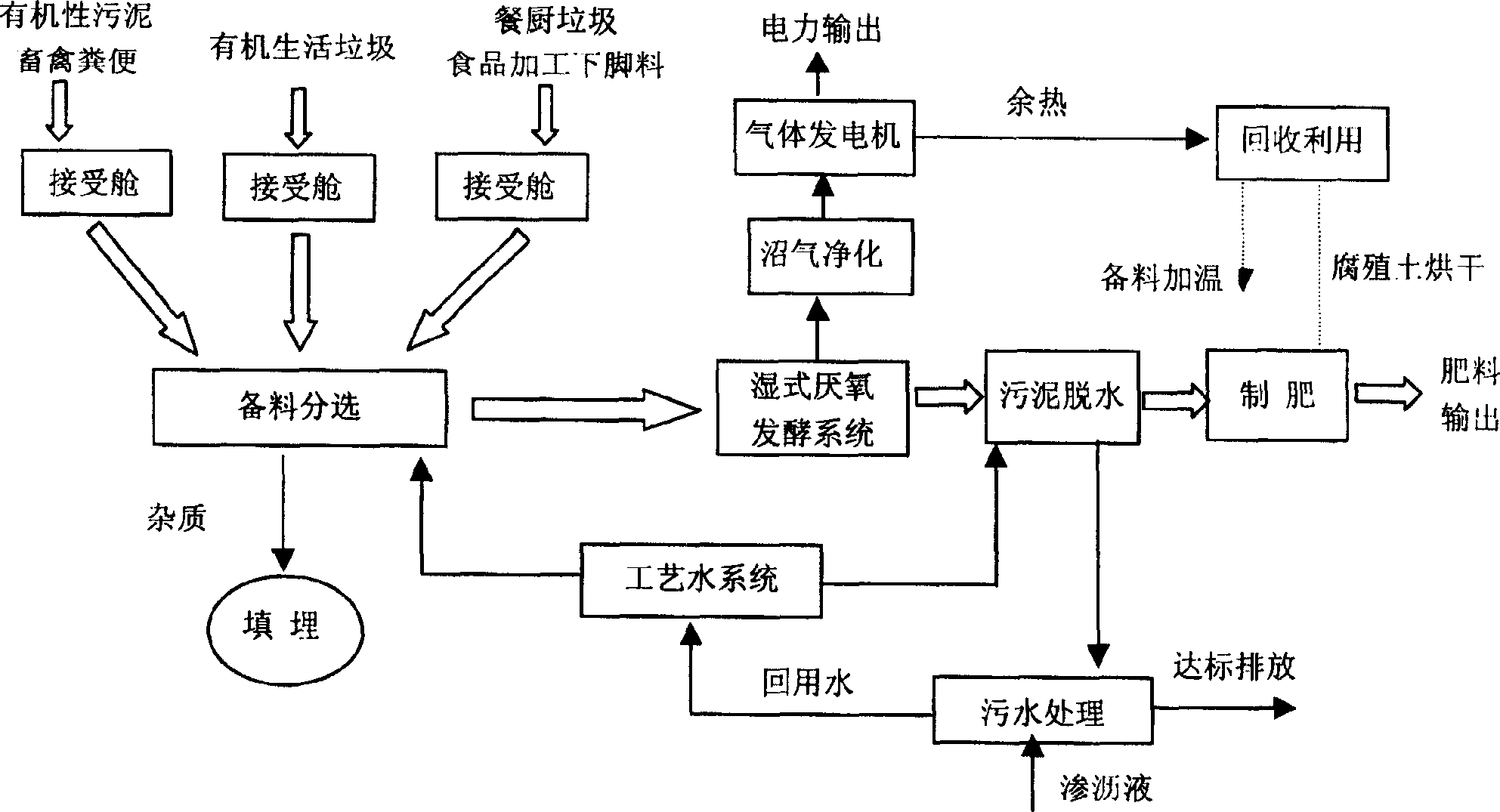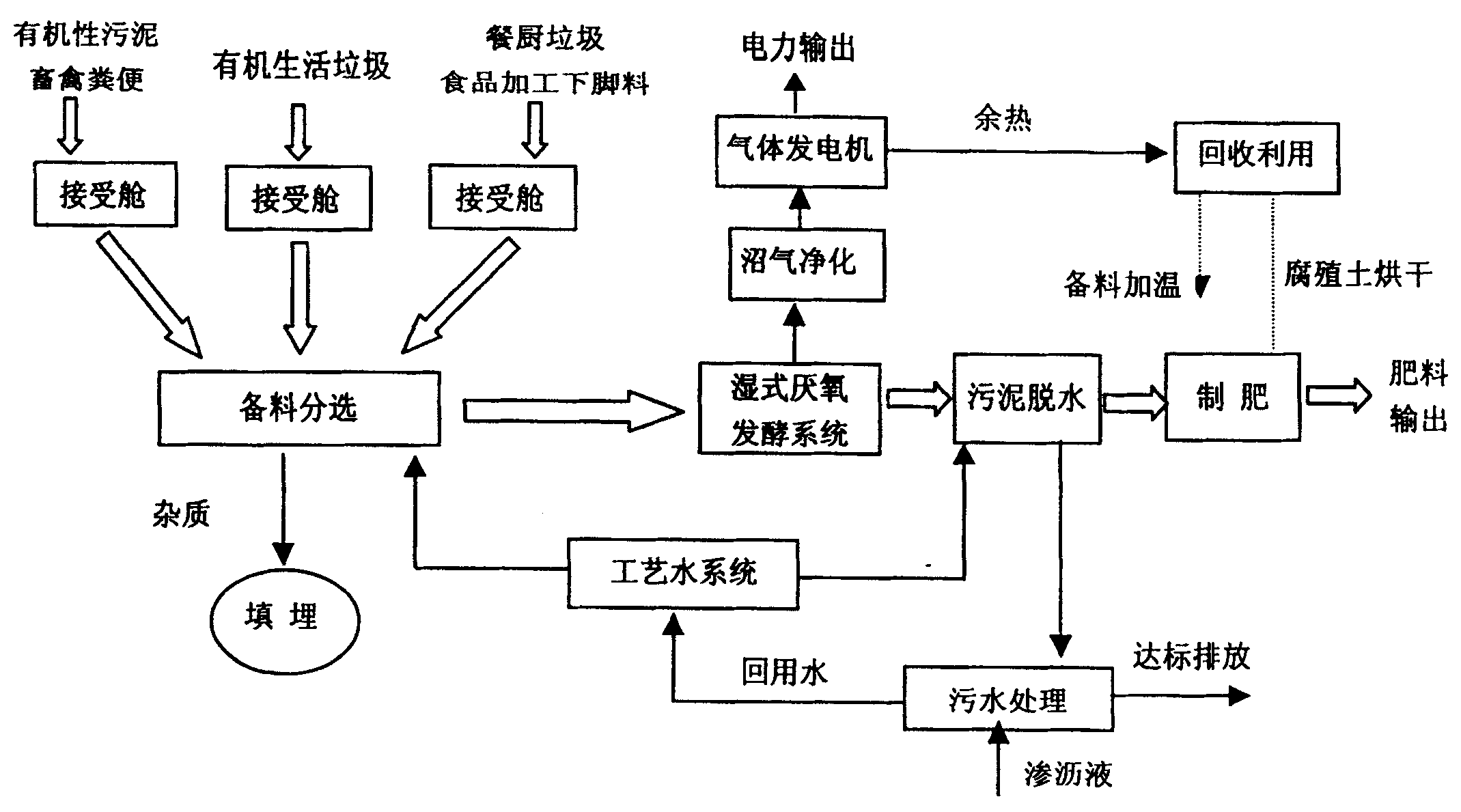Resources comprehensive treatment technology for organic waste material
A technology for comprehensive treatment of organic waste, applied in bio-organic partial treatment, biological sludge treatment, organic fertilizers, etc., can solve problems such as high biogas residue impurities, secondary pollution, and large differences in C/N ratio, and achieve High resource utilization rate, waste gas treatment up to standard, and the effect of increasing added value
- Summary
- Abstract
- Description
- Claims
- Application Information
AI Technical Summary
Problems solved by technology
Method used
Image
Examples
Embodiment Construction
[0024] Organic domestic waste, kitchen waste, leftovers from food processing industry, organic sludge and livestock and poultry manure are transported to the material preparation tank through the screw conveyor connected to the receiving cabin, and mixed with process hot water to produce solid matter content 15 ~16%, suspended material at a temperature of 36~37°C. The function of the material preparation tank is mainly to fully mix and crush the organic waste, remove impurities, and adjust the temperature, particle size and concentration to meet the requirements of mesophilic fermentation. Crushing and mixing are done by an agitator fixed on the top of the tank, whose rotation speed is controlled by an AC frequency converter, which can not only ensure sufficient agitation but also save energy.
[0025] Light impurities (such as: wood, plastic film, cork, etc.) float on the surface, are removed by the slag scraper, and after dehydration, they are sent to the waste bin. Heavy i...
PUM
 Login to View More
Login to View More Abstract
Description
Claims
Application Information
 Login to View More
Login to View More - R&D Engineer
- R&D Manager
- IP Professional
- Industry Leading Data Capabilities
- Powerful AI technology
- Patent DNA Extraction
Browse by: Latest US Patents, China's latest patents, Technical Efficacy Thesaurus, Application Domain, Technology Topic, Popular Technical Reports.
© 2024 PatSnap. All rights reserved.Legal|Privacy policy|Modern Slavery Act Transparency Statement|Sitemap|About US| Contact US: help@patsnap.com









